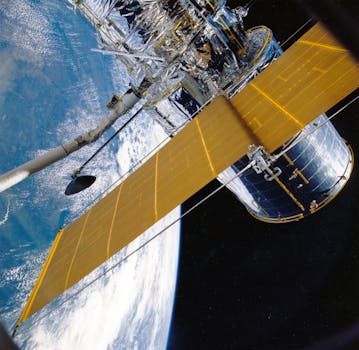
LEO Satellites Revolutionizing Global Connectivity – LEO Satellites
LEO satellites, or Low Earth Orbit satellites, are a type of satellite that orbits the Earth at an altitude of around 160 to 2,000 kilometers. This relatively low altitude allows LEO satellites to provide a range of benefits, including faster data transfer rates, lower latency, and improved connectivity. In this article, we will explore the world of LEO satellites and their role in revolutionizing global connectivity.
At the beginning of our discussion on LEO satellites, it is essential to understand the significance of these satellites in today’s world. LEO satellites have been around for several decades, but recent advancements in technology have made them more accessible and affordable. Companies like SpaceX, Amazon, and OneWeb are launching thousands of LEO satellites into orbit, with the goal of providing global internet coverage and bridging the digital divide.
The Benefits of LEO Satellites
So, what makes LEO satellites so special? For starters, their low altitude allows them to provide faster data transfer rates and lower latency compared to traditional geostationary satellites. This makes them ideal for applications that require real-time communication, such as video conferencing, online gaming, and virtual reality. Additionally, LEO satellites have a smaller footprint, which reduces the risk of interference and makes them more secure.
Another significant advantage of LEO satellites is their ability to provide global coverage. By launching a constellation of LEO satellites, companies can create a network that covers the entire globe, including remote and underserved areas. This has the potential to revolutionize the way we communicate and access information, particularly in areas where traditional infrastructure is lacking.
Applications of LEO Satellites
LEO satellites have a wide range of applications, from providing internet access to enabling IoT connectivity. Some of the most significant applications of LEO satellites include:
Global internet coverage: LEO satellites can provide internet access to remote and underserved areas, bridging the digital divide and enabling people to access information and communicate with others.
IoT connectivity: LEO satellites can enable IoT devices to communicate with each other and with the cloud, allowing for real-time monitoring and control of devices.
Earth observation: LEO satellites can be used for Earth observation, providing high-resolution images and data on the environment, climate, and natural resources.
Challenges and Limitations of LEO Satellites
While LEO satellites offer many benefits, they also come with some challenges and limitations. One of the biggest challenges is the high cost of launching and maintaining a constellation of LEO satellites. Additionally, LEO satellites have a shorter lifespan compared to traditional geostationary satellites, which means they need to be replaced more frequently.
Another challenge is the risk of space debris. With thousands of LEO satellites in orbit, there is a risk of collisions and the creation of space debris, which can pose a threat to other satellites and spacecraft.
In conclusion, LEO satellites are revolutionizing global connectivity by providing faster data transfer rates, lower latency, and improved connectivity. While they come with some challenges and limitations, the benefits of LEO satellites make them an essential part of the future of satellite technology.




